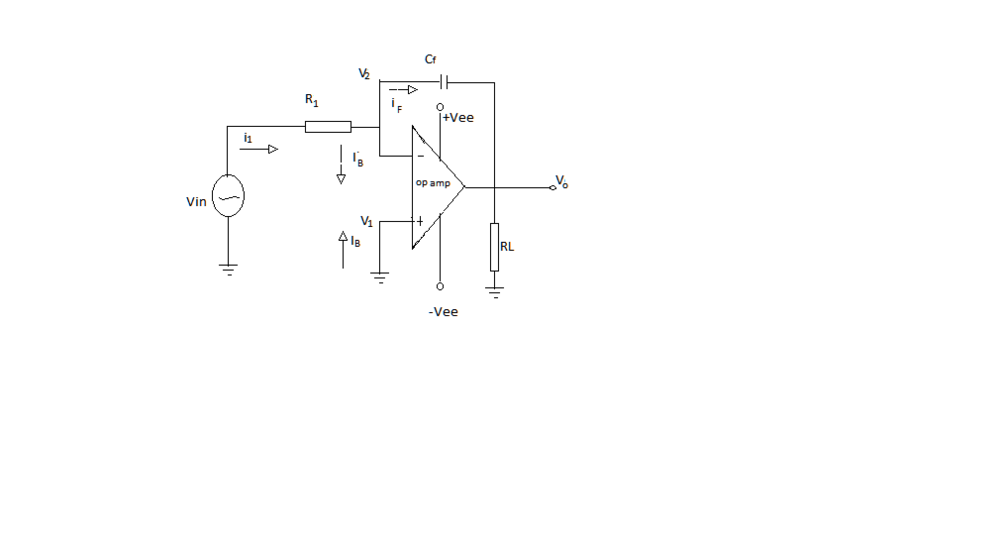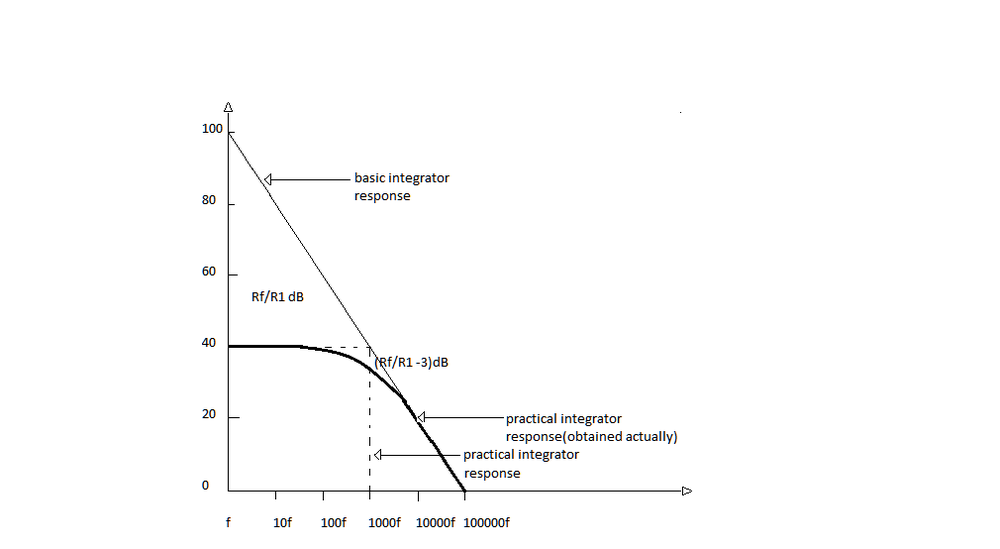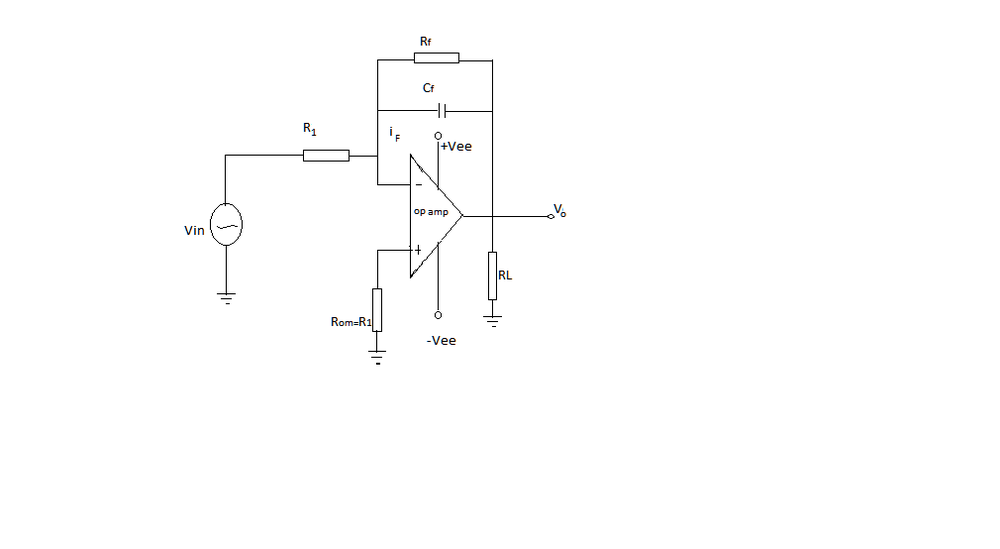- Op amp integrator
-
Contents
introduction
The Integrator[1] is a circuit using OP-AMP that performs the mathematical operation of Integration. The integrator acts like a storage element that "produces a voltage output which is proportional to the integral of its input voltage with respect to time". In other words the magnitude of the output signal is determined by the length of time a voltage is present at its input as the current through the feedback loop charges or discharges the capacitor as the required negative feedback occurs through the capacitor.
ideal integrator circuit
 applying kirchoff's current law at the node v2,
applying kirchoff's current law at the node v2,- i1 = IB + iF
- i1 approximately equal to :iF


But :v1 = v2 since gain is very large. Hence
output voltage vo is obtained integrating both sides with respect to time:
- vo = CF( − vo) + vo | t=0
C is a constant equal to the initial voltage on the capacitor. When :vin = 0, the integrator gives open loop gain because capacitor acts as an open circuit for DC voltage i,e input offset voltage of the op amp. this produces an error voltage at the output. Therefore to obtain error free output voltage a resistor is conected in parallel with the feedback capacitor as shown in the practical integrator circuit. :RF limits the low frequency gain and reduces error in the outtput voltage.
practical integrator circuit
frequency response
 The frequency response of the practical and ideal integrator is shown in the above figure.
The frequency response of the practical and ideal integrator is shown in the above figure.:fb is the 0 dB gain frequency.In the figure the gain is constant upto the frequency :fa. beyond :fa the gain decreases at a rate of 20 dB per decade.
Between :fa and :fb the practical integrator acts as an integrator. Obviously the values of :RFCF and :R1CF must be chosen such that :fa < fb.Thetimeperiodoftheinputsignalmustsatisfythecondition: < math > T >= :RFCF where
applications
The integrator is mostly used in analog computers, ADCs and wave shaping circuits.
References
- ^ Ramakant A.Gayakwad, “Op-Amps and linear integrated Circuits”
Categories:- Electrical circuits
Wikimedia Foundation. 2010.







